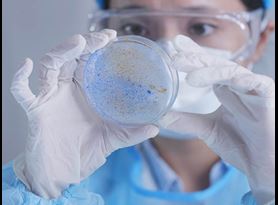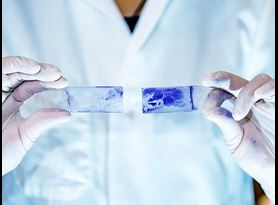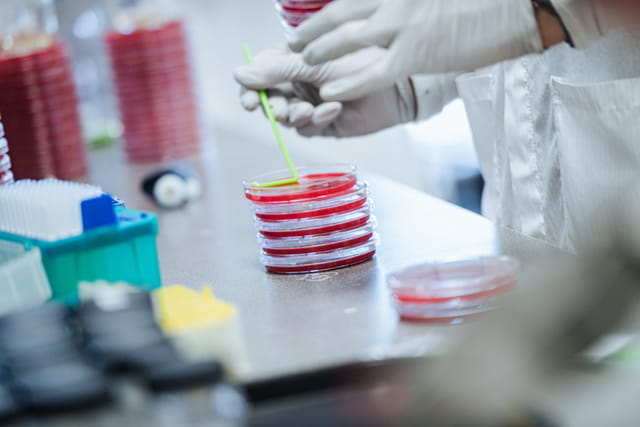
Talk to an expert
+1 888 786 7555Simulated Large Indoor Space Bioaerosol Testing FAQs
Element has unveiled one of the first and largest air treatment testing facilities designed to support indoor space public health air quality claims. This new, much-needed capability fulfills emerging and critical testing needs, as the need for bioaerosols was defined by the COVID-19 pandemic. Here are the top 5 things you need to know about the 214m3 biocontainment lab.
1. What organisms do you recommend to test against for biological aerosol testing?
EPA recommends testing against S. aureus (gram-positive), K. pneumonia (gram-negative, non-hospital use), and P. aeruginosa (gram-negative, hospital use) which aligns with their current guidance framework used for other public health claims. We are able to test these 3 organisms in addition to bacteriophages, including MS2. We also have the ability to test against mammalian viruses, such as feline calicivirus (small non-enveloped virus) and influenza (enveloped virus). Please note, while MS2 is a great proxy for worst-case virus testing, if this is the only surrogate – limits.
2. What is the test environment?
Our innovative technologies lab, designed for bioaerosol testing, meets EPA requirements for minimum room size. We are able to test at 107m3 and 214m3 depending on product/Sponsor needs. This is important because the surface area to air ratio can impact testing through particle deposition on surfaces.
Additionally, multiple air exchange rates can be tested under recirculation or fresh air introduction scenarios. Testing can also be performed with a simple ceiling fan in use or statically. To get in touch with an expert to discuss bioaerosol testing, fill out our request form.
3. Does Element have a protocol for bioaerosol testing?
Element has an R&D protocol that is currently being used for testing. Our scientists are currently working with the US Environmental Protection Agency (EPA) on method development and will be submitting protocols through PRIA for bacteria, fungal, bacteriophage, and mammalian virus to provide clients EPA-approved protocols for general air sanitization claims.
4. Does Element perform GLP-Compliant testing?
Yes! Good laboratory practices (GLP) are required for valid submission of most data packets to regulatory bodies, such as the Environmental Protection Agency (EPA) for antimicrobial pesticide registrations. Element has performed tens of thousands of studies that have successfully been approved by EPA. We are frequently audited by clients and EPA, and welcome visitors to our lab. Interested in knowing more about our in-person and virtual quality assurance tours? Reach out to us today.
5. Are there products currently on the market with air sanitization claims?
Yes. As of 9/30/2022, EPA approved Reckitt Benckiser’s Lysol product with air sanitization claims for 99.9% reduction of both bacteria and viruses.
Years ago, EPA allowed companies to put air sanitization claims on products that had glycol content > 6% without submitting microbial efficacy data. After the data call in, EPA began to require companies to submit efficacy data, although the guidance has lacked clarity until now. We understand how the current product was tested and anticipate EPA to release more information in the early months of 2023.
Interested in learning more?
Get in touch with us today to start the conversation.
Find related Resources
Learn more

Antimicrobial Testing
Antimicrobial testing performed in Element laboratories has supported the successful registration of thousands of antimicrobial products.

Microbiology Testing
Element offers a diverse array of microbiology testing services and can serve clients from early-stage antimicrobial product development and non-GLP screen testing all the way through GLP testing for submission.

About Element Eagan
Element Eagan is the premier contract antimicrobial testing laboratory and expert partner to the developers, manufacturers and users of antimicrobial pesticide and biocide products. We have more than 30 years of experience generating GLP-compliant data.
Sign Up for Free Resources
Visit Element's email subscription center to receive the latest industry news, technical whitepapers, case studies, webinars, and upcoming events.




